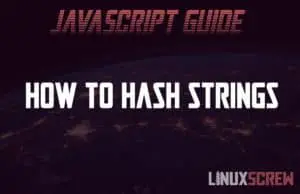Check/Validate String Matches Regex in JavaScript [Examples]
This article will show you how to use Regular Expressions (Regex) to validate matching strings in JavaScript. All user input collected in your applications should be validated. If an email address is required, a valid email address should be entered, or sending the email will fail. If a phone number is required, a valid phone number must be entered, and so on. Regex can be used for this validation by matching a whole string to a specified format. Regex can also be used to search … Read more

![Check/Validate String Matches Regex in JavaScript [Examples] 1 JavaScript regex match](https://cd.linuxscrew.com/wp-content/uploads/2022/06/javascript-regex-match-300x194.jpg)
![Simple Guide to Python Multiprocessing/Threading [Examples] 2 Python multiprocessing](https://cd.linuxscrew.com/wp-content/uploads/2022/06/python-multiprocessing-300x194.jpg)
![Running External Programs in Python with subprocess [Examples] 3 Python subprocess](https://cd.linuxscrew.com/wp-content/uploads/2022/06/python-subproccess-300x194.jpg)

![Remove Page Elements using JavaScript RemoveChild [Examples] 5 JavaScript removeChild()](https://cd.linuxscrew.com/wp-content/uploads/2022/06/javascript-removechild-300x194.jpg)
![Use appendChild() in JavaScript to Add Page Elements [Examples] 6 JavaScript appendChild()](https://cd.linuxscrew.com/wp-content/uploads/2022/06/javascript-appendchild-300x194.jpg)

![Pop!_OS on the Raspberry Pi [Review] 8 Pop!_OS Raspberry Pi Review](https://cd.linuxscrew.com/wp-content/uploads/2022/05/pop-pi-300x194.jpg)
![JavaScript setAttribute() Method-What It Is/How to Use It [Examples] 10 JavaScript setAttribute()](https://cd.linuxscrew.com/wp-content/uploads/2022/05/javascript-setattribute-300x194.jpg)
